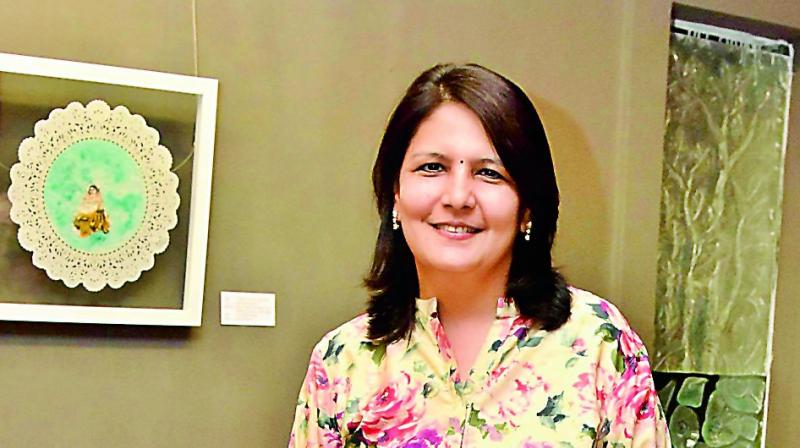Hyderabad ignores its artists

Hyderabad has churned out some really well-established names on the Indian art circuit in the likes of Laxma Goud, Surya Prakash and Thota Vaikuntham, or more contemporary ones like Sachin Jaltare and Laxman Aeley. But while the art revolution has taken Mumbai and Delhi by storm, Hyderabad still struggles to find a place on the country’s art map.
Though several artists from the city have won critical acclaim, the main reasons believed to be responsible for the lacklustre art scene are, first the lack of art patrons, and the second is a lack of inclination to buy works of art.
Artist Surya Prakash has often lamented that though there is no dearth of money amongst Hyderabad’s elite, there is absolutely, no inclination towards art. “People are often more interested in buying a shiny imported car than investing in an iconic piece of art,” he rues, a fact that most gallery owners in the city concur with.
Rekha Lahoti of Kalakrithi Art Gallery, one of the very select few galleries to be exhibiting artworks at the India Art Fair, says, “Respect for art has been no doubt slow and fairly late but we are definitely getting there. The major issue we have to deal with is that people still are not nuanced enough to think of art as a good investment, and therefore there is a lack of local customers. At Kalakrithi, ever since we started in 2002, our major customers have been international and national art enthusiasts, but not local people. But I think that perception is slowly changing and Hyderabad is also warming up to the notion of buying art.”
Avani Rao of ICON Art Gallery, however, paints a less rosy picture. According to her the first matter of concern is the migration of artists from the city. She says, “Hyderabad had about 300 art professionals, and even a decade back most were dedicated to a full time practice. The sad and shameful fact is that the majority of them either left, drifted to allied and more commercially oriented fields like animation and advertising, or are teaching full time.
The past 10 years of low market has reduced their art potential and therefore a lack of appreciation of value for fine art. We are losing the legacy of leaving a great artistic, aesthetic tradition of a generation, just for sake of basic sustainability of the artist and their family.”
Voicing similar sentiments, Manvinder Dawer of Mumbai’s acclaimed India Fine Arts adds another reason to the list the lack of information and awareness. “I feel that one has to create more awareness and that can be done by hosting more interactive art events. Also if the press was to give ample publicity to the artists and how it impacts society it would be very helpful. But yes, if people seriously buy art, more and more students will want to come into the field and they will also be more innovative while coming up with new concepts.”
Prasuna Murali, a city-based artist and an art teacher who started pursuing her passion fairly late in life, says, “Definitely, we do wish for people to buy art. More than that, we just want people to engage with art more. Art needs the society but the society also needs to know that they need art to carry forward many cultures. The canvas and the society go hand in hand. As a teacher, I am still not able to tell a child in school that they can pursue art as a career and when we get that confidence is when I can say there is an environmental of nurturing art. Otherwise for younger adults who have chosen the path, there’s little opportunity.”
On the other hand Neha Verma, a recent graduate from the Sarojini Naidu School of Fine Arts and Communication, University of Hyderabad feels that even though there is a very evident lack of patronage, residency programmes are what help art students most, once they are fresh out of college. “I got selected for the Kalakriti residency after my final display in the university, and this residency has given me a space to experiment and work on my concepts without fear. I am going present at the India Art Fair, which a humongous opportunity. But yes, I do agree that Hyderabad's locals need to step up their game when come to buy art, because most of the buyers are still from Delhi Mumbai and outside the country.”
To tackle the situation, Avani feels that the government has to step in to create structures that will sustain artists’ livelihoods. It must also put in place correct institutional measures and infrastructure such as working studios, high quality museum and exhibition spaces. “The corporate and private houses have to realise the value of keeping-up art practices of the region by purchasing, promoting and sponsoring artists and events. The most important aspect is a rise in the consciousness of the general public about the value of art, especially at the school level. More than purchasing, visits to galleries and art festivals will inculcate and sustain interest in art practices of Hyderabad. The moral encouragement is now more important than purchase. Not everyone can afford art but can everyone can sure learn to appreciate it,” she concludes.

